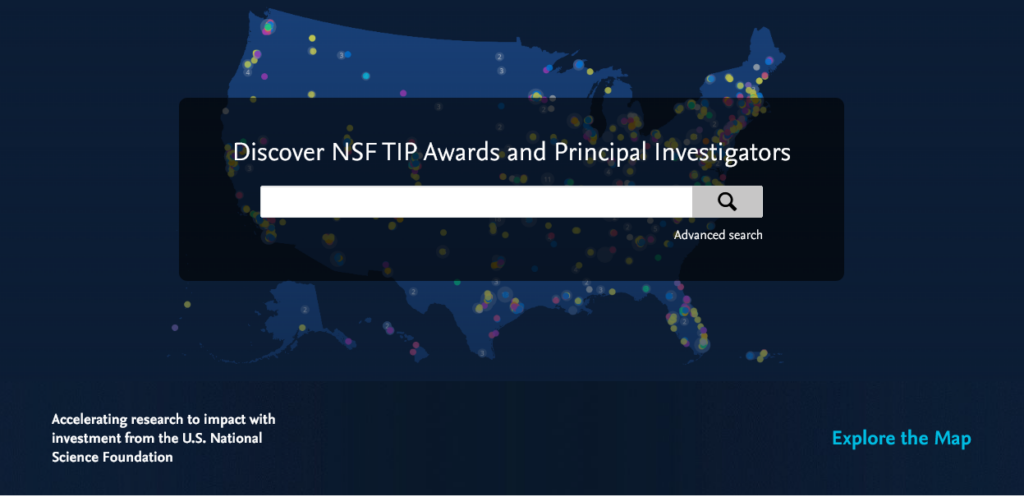Mapping Investments: Impact of Data Tools for Research Partnerships
July 30, 2024 —Finding the right partner can be just as important as the partnership itself. As technology progresses, more tools are coming online to help identify potential partners and build collaborations. Understanding the available resources and how to best leverage them to find like-minded collaborators can help jumpstart research partnerships.
—Finding the right partner can be just as important as the partnership itself. As technology progresses, more tools are coming online to help identify potential partners and build collaborations. Understanding the available resources and how to best leverage them to find like-minded collaborators can help jumpstart research partnerships.
NSF TIP Investments pilot and other U.S.-based public tools
Earlier this month, the U.S. National Science Foundation’s Directorate for Technology, Innovation and Partnerships (TIP) launched its investment visualization and search tool, the TIP Investments pilot. Using UIDP Community Partner Elsevier’s Pure platform, the TIP Investments pilot features a map of awards and award data, including information on the organizations and principal investigators (PIs) for each award. The pilot leverages open-access data repositories of NSF’s award search to illustrate the impacts of NSF’s investments across key technology areas. Although it features only award data from programs managed by the TIP Directorate, the pilot and other data tools supported by TIP can help users drill down by technology area, geography, and other factors to PI contact information. At the tool’s release, TIP said it plans to enhance its data tools over time by adding additional data and features that showcase investments while serving users’ needs.
The TIP Investments pilot is similar to other tools rolled out by research-funding agencies in the United States. The National Institutes of Health (NIH) Research Portfolio Online Reporting Tools (RePORT) enables users to search projects, publications, and patents funded by NIH and explore awards by location, spending by category, and other filter criteria. RePORT also offers a matchmaker function allowing users to enter abstracts into a query that finds similar NIH-funded projects or program officials. This function could be used to find reviewers or even potential collaborators in a given field of research.
International resources and intent
Other countries are leveraging online tools to map awards and funded projects. UK Research and Innovation (UKRI) uses Gateway to Research, a simple search allowing users to query data by project area, PI, or keywords. Filters can refine search results to find projects, publications, people, or organizations that have received funding from UKRI in a given timeframe. Likewise, the European Commission uses its EU Funding & Tenders Portal, allowing users to search for programs, proposals, projects, and results.
The EU also has a designated search function for finding partners that allows users to search for both individuals and organizations involved in various EU programs, like Horizon Europe.
What makes the EU’s partner search and the TIP Investments pilot different from some of the other tools is their intended use is not only to catalog award data, but also to help researchers find partners and facilitate connections. To enable cross-sector research collaborations to thrive, government agencies and other funders seek technology solutions to help researchers expand existing collaborations and forge new partnerships.
Why it matters
Publicly available award databases offer big-picture snapshots of the research landscape, but they can also be valuable tools for scoping out potential collaborators. With the launch of the TIP Directorate’s new tool and its stated aim to connect researchers, we can expect other agencies with cross-sector collaboration goals to follow suit. The more research organizations take advantage of the various tools to find new partners, the greater the potential impact for innovative research teams to connect and create impact.
We want to hear from you. Do you or your organization use a tool like the TIP Investments pilot in your collaborations? Let us know on our LinkedIn profile.



